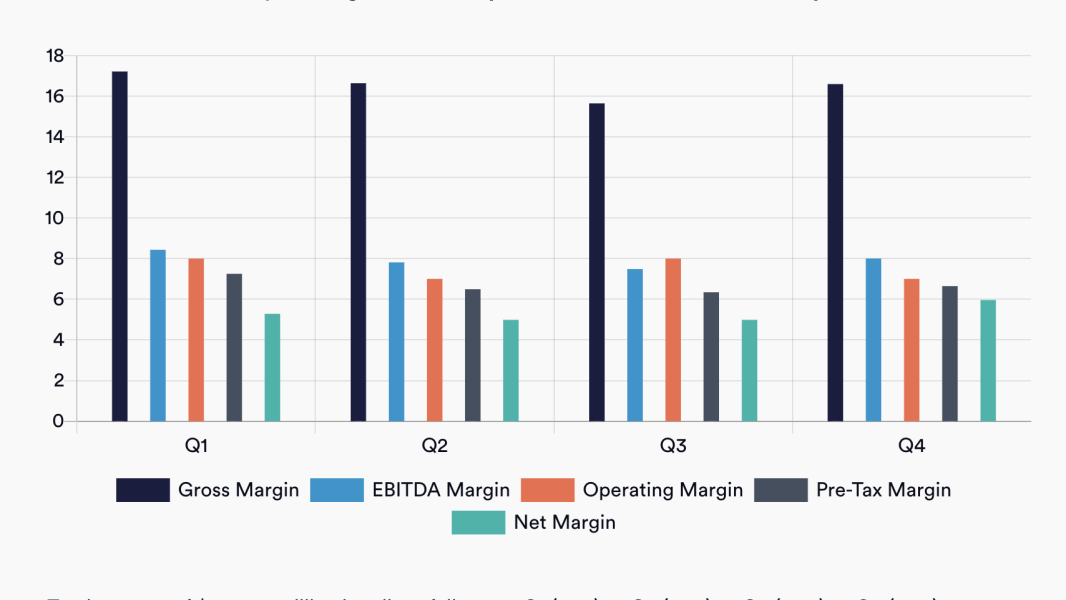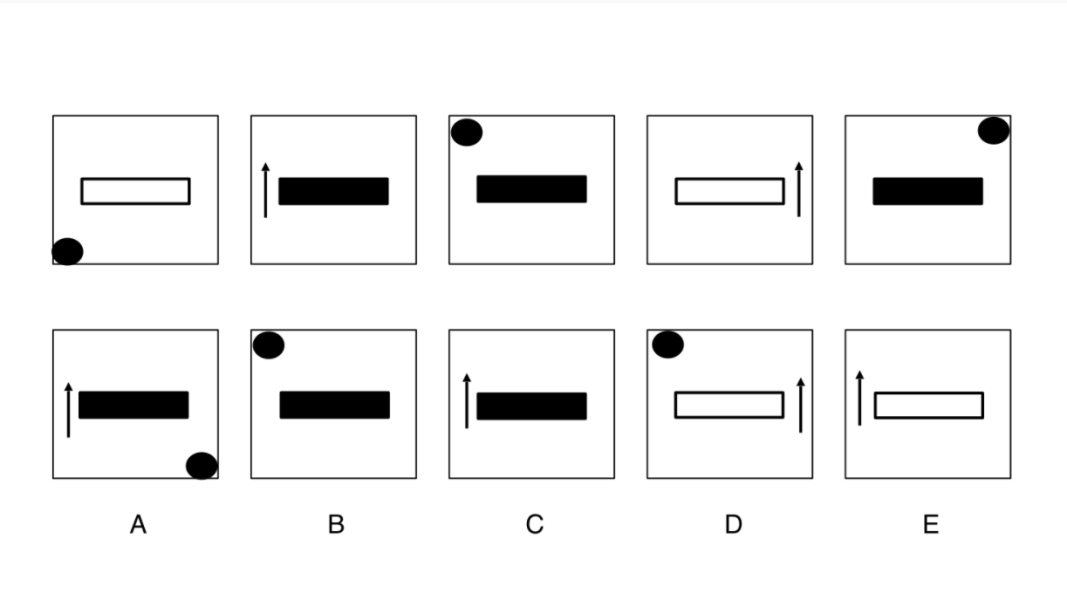Predictive Index (PI) is the test publisher behind the PI Behavioural Assessment (PIBA) and PI Cognitive Assessment (PICA). These cognitive ability and personality tests are commonly used as pre-employment assessments.
The results of these early-stage recruitment tests are seen by employers as a strong indication of future performance in role.
What is a Predictive Index Test?
A Predictive Index test is a common hurdle in graduate recruitment processes and may also be used for experienced hires. It is employed, alongside a candidate’s initial application and CV, to determine whether an individual is likely to be a good fit at a company.
Through the PICA and the PIBA tests, abstract intelligence and behavioural characteristics are systematically assessed.
Candidate scores are used to effectively streamline the applicant pool, avoiding any unconscious bias. Achieving a high score in these tests is crucial for progressing in the recruitment process, so it’s important to understand how to prepare for them.
The Predictive Index Cognitive Assessment (PICA)
The PI Cognitive Assessment aims to assess a candidate’s cognitive ability, critical thinking, and reasoning skills in a single assessment. It contains verbal reasoning, numerical reasoning, and abstract reasoning questions.
There are three sections to the PICA, each devoted to one of these reasoning types:
- Verbal reasoning questions involve short passages of text and assess your comprehension skills.
- Numerical reasoning assesses your ability to deal rapidly with numerical problems involving percentages, fractions, ratios, algebra, number sequences and data interpretation.
- Abstract reasoning questions involve identifying the relationship rule(s) within a sequence or pattern.
The assessment has a total of 50 questions. These have to be answered within 12 minutes.
This is a challenging time limit and makes preparation for the PICA vital, as you will need to absorb and process complex information rapidly.
Tips for the PICA Test
The following will help to improve your performance in the PICA:
- Practise your timing. Answering 50 questions in 12 minutes is a demanding task, so do not panic if you are unable to finish the test (most people do not). It is, however, worth timing your practise sessions and aiming for the ideal rate of 15 seconds per question.
- All questions in the PICA are equally weighted, so it is your balance of accuracy and speed that is important. If you become stuck on a question, do not dwell on it. Instead, move swiftly on to the next.
- Become familiar with the question types. Numerical, verbal and abstract reasoning questions each have a particular style and structure. Practising these questions will increase your confidence on test day.
PICA Sample Questions
Numerical reasoning practice question
What is the gross margin in quarter 2?
- 1) $1600m
- 2) $1700m
- 3) $1800m
- 4) $1900m
The correct answer is $1700m. Step 1: Calculate the revenue in quarter 2 ($36,500 x 28% = $10,220M)
Step 2: Calculate the gross margin ($10,220 x 16.63% = $1,700M)
Verbal reasoning practice question
Statement: The primary activity of a derivative’s trader and a gambler are analogous.
- True
- False
- Cannot tell
The correct answer is True. Trading is described as making ‘large bets’, which is similar (analogous) to a gambler’s main activity of gambling.
Abstract reasoning practice question
Which of the boxes comes next in the sequence?
The correct answer is C. The rectangle is unshaded for one turn, then shaded for two turns. The circle moves around the corners of the frame in a clockwise direction with each alternate turn. The arrow appears on the left of the rectangle then on the right of the rectangle each alternate turn.
The Predictive Index Behavioural Assessment (PIBA)
The PI Behavioural Assessment is a personality test that provides insight into an individual’s behaviours and motivations. This insight is used to predict how candidates may react in workplace scenarios and judge whether they would work well within the company culture.
The answers given help to form a picture of your personality based around the following four character traits:
- Dominance – aims to determine where you stand on the scale from ‘Independent’ to ‘Collaborative’.
- Extroversion – a measure of social interaction, on a scale from ‘Social’ to ‘Reserved’.
- Patience – maps your consistency and stability on a scale from ‘Steady’ to ‘Driving’.
- Formality – provides a measure of behaviour on a scale from ‘Precise’ to ‘Flexible’.
The assessment involves two sections and a list of adjectives, each attached to one of the four personality traits above.
For the first adjective list, you will be asked to select the words that describe the way you feel you are expected to act. For the second list, you will be asked to select the words that best describe you.
From these selections, a reference profile that reflects the way you think and work is produced.
In this test there are no right or wrong answers. To impress employers, though, it is wise to know the traits and behaviours valued by the company you are applying to.
Ultimately, however, they want to know if you are a good fit. Answer honestly, as giving a false impression will not benefit you or the employer in the long run.
Unlike the PICA, the PIBA is not a timed assessment. On average, it takes around 10 minutes to complete.
Tips for the PIBA Test
The following will help to improve your performance in the PIBA:
- Get introspective. It may seem simple, but it can be surprisingly difficult to distil the essence of your personality down to a few adjectives. Spend some time before the test thinking about your key personality traits and behaviours so you can adeptly describe yourself.
- Research the company values and culture. Identify any traits you have that are complementary and likely to be respected within such a culture.
- Take your time. The PIBA does not involve any time pressure, so think carefully about the adjectives you select to give the most accurate depiction of yourself.
Which Employers Use Predictive Index Tests?
Predictive Index tests are a great way of rapidly and objectively assessing how well-suited candidates are to work in particular job roles.
The PI Cognitive Assessment and PI Behavioural Assessment are trusted for the accuracy of their insights and regularly used by a number of high-profile global companies including:
Not every position or department will require a Predictive Index Assessment result, but these companies have been known to place emphasis upon PI insights in their recruitment processes.
FAQs
How are Predictive Index tests scored? The Predictive Index tests are scored differently from other assessments, as the ideal result differs according to job function. The PICA is scored out of 50 and PI publishes a list of recommended target scores for a range of job roles. The PIBA results in a personality reference profile.
How should I prepare for a Predictive Index test? As with any standardised recruitment test, the best way to ensure a solid performance in the Predictive Index test is to practise answering similar questions under a time limit. You should cover numerical, verbal and abstract reasoning questions in your preparation.
Can you fail a Predictive Index test? The Predictive Index tests do not result in pass or fail scores but aim to give an indication of suitability for a role. Each industry/occupation has a target score attached. It is recommended that, for a competitive score, you aim for the indicated target score plus two points.
What is the Predictive Index looking for? The predictive Index tests assess how well a candidate will perform in an industry. They are employed to test cognitive ability, critical thinking (PICA) and behavioural compatibility (PIBA). The level of mental agility sought, and the behavioural drivers most highly valued, will differ according to the company and profession.











